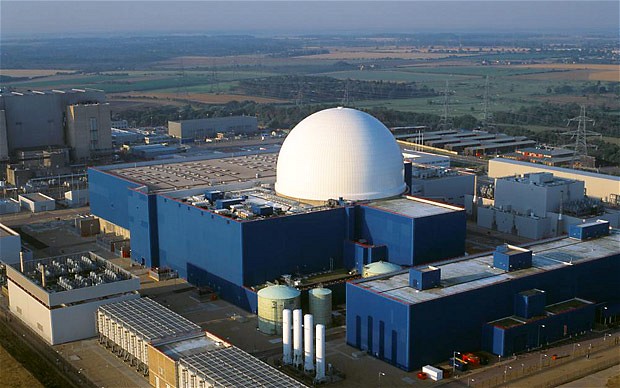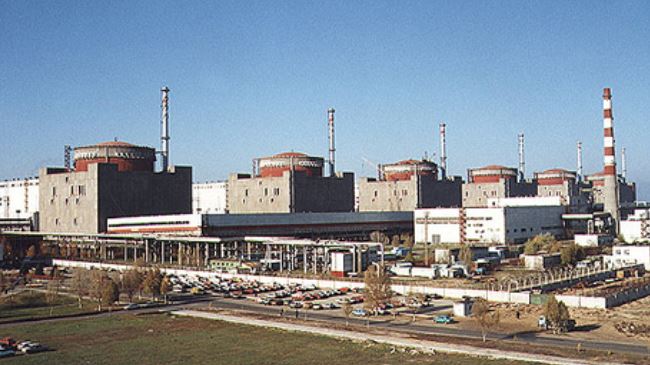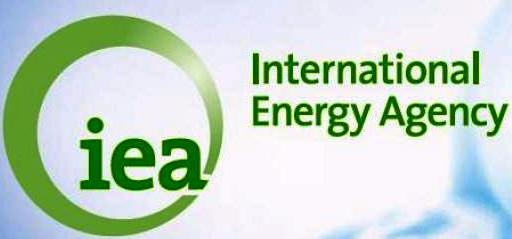
Blog
-
Geiger Readings for December 05, 2014
Latitude 47.704656 Longitude -122.318745Ambient office = 95 nanosieverts per hourAmbient outside = 101 nanosieverts per hourSoil exposed to rain water =103 nanosieverts per hourCarrot from Central Market = 99 nanosieverts per hourTap water = 73 nanosieverts per hourFiltered water = 64 nanosieverts per hour -
Nuclear Reactors 183 – Most of Britain’s Operating Nuclear Power Reactors Will Have to be Decommissioned in the Next Fifteen Years
I have blogged before about the aging nuclear reactors around the world and the need to decommission many of them in the near future. Today I am going to talk about the problems confronting the United Kingdom nuclear power industry. A panel of experts has stated that all but one of Britain’s nuclear power reactors will have to be shut down within fifteen years because of economic and/or safety problems.
Almost all of the nuclear power reactors in Britain were built in the 1970s and 1980s with an expected lifespan of twenty five years. They have all been authorized to continue to operate beyond this twenty five year license. A former inspector of nuclear installations says that they are still operating safely for the time being. However, he said that the time will come soon when it will not be economical to operate them or they will be unsafe. One of the major issues with aging reactors that use graphite for moderating the nuclear reaction as the British reactors do is the fact that the cracks form in the graphite control rods as time passes. While it is not certain when the rods become unusable, it is certain that that day will come.
Closing all these existing power reactors would mean a loss of about twenty percent of the electricity generated in Britain. The only current reactor expected to be operating by 2030 is the Sizewell B power station.
Britain is working with the French company Areva to build a new nuclear power reactor at the Hinkley Point power station. There have been some problems with the Hinkley project including questions about foreign stakes in the new reactor. Areva has been encountering some financial problems lately but denys that they will affect the new Hinkley Point reactor. Despite vocal anti-nuclear groups in Britain, the public support for new nuclear power stations has been increasing recently.
While there is support for expanding nuclear power in the European Union, there are member nations that are turning away from nuclear power. Germany has declared that it is turning off all its nuclear power plants in favor of pursuing renewable sources of energy. France which gets the majority of it power from nuclear reactors is currently engaged in a heated debate about the future of nuclear power in France. Recent announcements by the French government about the future of nuclear powers indicate that the French public seems to be less supportive of nuclear power than in the past.
All over the world, the nuclear reactors from the period of intense reactor construction in the 1970s and 1980s are reaching the end of their lifetimes. Several reactors have been shut down in the U.S. recently because they were not able to be competitive in the energy market or they are getting too expensive to repair. Most of the old reactors will have to be decommissioned which is a complex and expensive process. Reactor operators in the U.S. are supposed to maintain a fund specifically for decommissioning but the NRC has been leaning on members of the nuclear industry who cannot prove that they have enough money in the fund. In addition, the cost of decommissioning is just going to keep rising.
All the nuclear power reactors in the world should be shut down and decommissioned as soon as possible. Every year that passes increases the cost of decommissioning and potential for serious accidents.
Sizewell B power station:
-
Radiation News Roundup December 04, 2014
Oxford professor in Japan says that people enjoy effects of radioactive contamination. enenews.com
Emergency repairs reported at largest nuclear power plant in Europe. enenews.com
Media jumps on shutdown event at Zaporizhya NPP In Ukraine. nuclearstreet.com
AREVA Signs Contract with Exelon for Used Nuclear Fuel Storage. nuclearstreet.com
-
Geiger Readings for December 04, 2014
Ambient office = 74 nanosieverts per hourAmbient outside = 127 nanosieverts per hourSoil exposed to rain water = 127 nanosieverts per hourSweet potato from Central Market = 119 nanosieverts per hourTap water = 78 nanosieverts per hourFiltered water = 68 nanosieverts per hour -
Nuclear Reactors 182 – Problems at a Ukrainian Nuclear Power Plant
The Ukrainian government has announced that there was an accident at the nuclear power plant in southeast Ukraine near the city of Enerhodar in the Ukrainian province of Zaporizhzhya. The biggest nuclear power plant in Europe suffered a short circuit which caused a loss of power from one of the six units at the plant. The one gigabyte nuclear power reactor was not threatened by the accident and the authorities say that there was no threat to the public. The reactor has been disconnected from the Ukrainian electrical grid but is still functioning normally and producing power. The reactor will be reconnected to the grid and return to normal service on December 5, 2014.
The Ukrainian government has expressed concerns that their fifteen nuclear reactors could potentially become a casualty of the current civil war. They said that they feared that some group might try to occupy a nuclear power plant where they might be attacked by their opposition, that plant operators might flee if fighting came close, or that a nuclear power plant might be accidentally or intentionally shelled or bombed by one side of the dispute.
Last May, 20 armed members of the neo-Nazi Right Sector party tried to occupy the Zaporizhzhya nuclear power plant claiming that they were afraid that the Separatists might seize control of the city. The Right Sector members were arrested by the police. This particular event illustrates that the Ukrainian concern for the safety of their nuclear power plants is definitely warranted.
Ukraine was energy self-sufficient in the past but since the beginning of the civil war, the Separatists in the Donetsk and Luhansk regions of east Ukraine have shut sixty six coal mines which has caused a shortfall of electric power prompting the government to issue calls for conservation. The loss of the power from the Zaporizhzhya nuclear reactor does not help their power situation.
The province of Zaporizhzhya shares a border with the province of Donetsk which is one of the two provinces that recently held referendums about their relationship with the government in Kiev and expressed interest in crafting a closer relationship with Russia. If the Russians decide that they would like to have a land route to Crimea which they recently annexed, that land route would have to go through Zaporizhzhya.
Ukraine is in an awkward situation with respect to their nuclear power reactors. Russia helped them build those reactors and provided fuel rods. Ukraine did try to put new fuel rods from Westinghouse into one of their Russian reactors but the new rods did not fit. Ukraine is working with Westinghouse to solve the problems because, at this time, Russia is backing the Separatists and may not be interested in selling new fuel rods to Ukraine.
Zaporizhzhya nuclear power plant:
-
Geiger Readings for December 03, 2014
Ambient office = 100 nanosieverts per hourAmbient outside = 73 nanosieverts per hourSoil exposed to rain water = 70 nanosieverts per hourHoney Crisp Apple from Central Market = 89 nanosieverts per hourTap water = 105 nanosieverts per hourFiltered water = 93 nanosieverts per hour -
Radiation News Roundup December 03, 2014
An Invisible Blanket of Death Covers Fukushima Province Area. commonground.ca
Kyodo News cut off the significant part of the press conference by Dr. Keith Baverstock held in Foreign Correspondents’ Club of Japan on 11/20/2014. fukushima-diary.com
The UK government has signed a cooperation agreement with NuGen “to promote external financing” for the Moorside nuclear power plant in Cumbria. world-nuclear-news.org
-
Nuclear Reactors 181 – International Energy Agency Issues Report on Nuclear Cooperation in the European Union
The International Energy Agency (IEA) has just issued a report that recommends that incentives be offered to support the construction of new nuclear reactors to assist European Union members in reducing their carbon emissions. In its own words, “The IEA is an autonomous organization which works to ensure reliable, affordable and clean energy for its 29 member countries and beyond. The IEA’s four main areas of focus are: energy security, economic development, environmental awareness, and engagement worldwide.”
The IEA report encouraged cooperation across the E.U. on uprates, safety upgrades and extensions of the lifetimes of existing nuclear power reactors in order to achieve the highest safety standards and regulatory stability. The report suggested that appropriate incentives be created for member states who “wish to maintain the nuclear option as part of the energy supply diversity and security”. The report stated that the EU should work to with member states on the problem of disposal of radioactive waste and the creation of regional repositories for permanent waste disposal.
The IEA report praised the E.U. for progress in liberalizing energy markets and said “global leadership on climate change is to be commended, but there remains much room for improvement.” The IEA is lobbying for what they refer to as an “Energy Union” across the whole E.U. There has been integration in the northern and western sections of the E.U. but the report said that much work needs to be done to integrate the rest of the member nations in to the “Energy Union.” The report criticized the energy market distortion that is being caused by regulated prices and rising surcharges and levies for green energy.
In October of 2014, E.U. leaders met and agreed to major climate change and energy targets that should be met by 2030. Now the challenge is to build the legal framework with rules to create a low-carbon system. This transition is going to be difficult because the electricity and transport sectors highly dependent on fossil fuels. The IEA executive director said that the proposed Energy Union should not represent “a buyer’s cartel” but should “feature an integrated energy market and effective climate and energy policies.” She said that the E.U. needed to “better pool its resources” in order to enhance both energy security and competitiveness of its industry in the internal energy market.
The IEA report said that the EU grid and market needed to be able to incorporate electricity generated by variable renewable energy. In addition, almost half of the existing nuclear power reactors in the E.U. will have to be retired in the next ten years which will required a great deal of planning and funding. The report says “Energy security must be placed at the centre of the Energy Union. In order to reduce dependency on one single supplier, the EU must further diversify gas and oil supplies, and cannot afford to reduce its energy options: nuclear, coal and unconventional gas and oil will need to be part of the mix.”
-
Radiation News Roundup December 02, 2014
-
Geiger Readings for December 02, 2014
Ambient office = 83 nanosieverts per hourAmbient outside = 81 nanosieverts per hourSoil exposed to rain water = 101 nanosieverts per hourRed bell pepper from Central Market = 60 nanosieverts per hourTap water = 88 nanosieverts per hourFiltered water = 81 nanosieverts per hour






